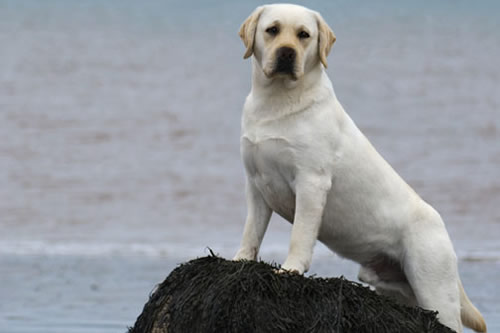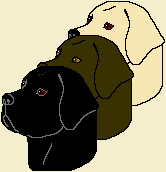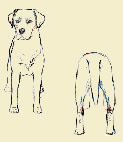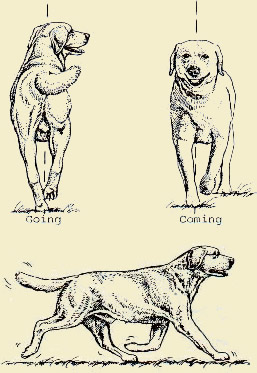

Labrador Retriever Adoption Service Inc.
www.lab-rescue.ca
info@lab-rescue.ca
Phone: 289-997-5227
The Official Canadian Breed Standard for the Labrador Retriever
Origin and Purpose: The Labrador Retriever originated and developed on the island of Newfoundland as an all purpose waterdog and functional retriever. The breed was preserved in England after anti-dog legislation almost decimated the breed in its homeland. The breed is noted for its love of retrieving and water, for its excellent nose, soft mouth, intelligence and biddable temperament. Extraordinary versatility allows Labradors to excel as hunting, service, and therapy dogs; in search and rescues; in drug and bomb detection; as family companions, and in performance and field events.
General Appearance: Medium sized, strongly built, compact, short-coupled, powerful, athletic; broad in skull; broad and deep through chest and ribs; broad and powerful over loins and hindquarters. A water resistant double coat, otter tail, and sound temperament are essential breed characteristics.
Proportion and Size:
Proportions: Distance from withers to elbow approximately equal to distance from elbow to ground; length from point of shoulder to point of rump very slightly longer than height at withers. A well -balanced dog is the ideal.
Size: Ideal height at withers: Dogs 22 1?2 - 24 1?2 inches (57 - 62 cm); Bitches 21 1?2 - 23 1?2 inches (54 -60 cm). Weight commensurate with height and with the breed's function as a medium sized, powerful, active retriever. Approximate weights: Dogs 60-80 lbs (27.27-36.36 kilos); Bitches 55-75 lbs (25-34.09 kilos).

Coat and Color:
Coat Distinctive Feature: Outer coat short, straight, although a slight wave down the back is also correct; dense without feathering, giving fairly hard feel to the touch; soft, dense weather-resistant undercoat.
Color: Wholly black, yellow or chocolate. Small white spot on chest permissible. Yellows range from light cream to fox red with variations in the shadings on ears, under parts, hocks, and down the back. Chocolates range from light sedge to dark chocolate.
Pigmentation: Black in blacks and yellows; brown or liver in chocolates. Pigmentation fading to a lighter shade in yellows not to be penalized.

Head
Head and Skull: A kindly, gentle expression is characteristic of the breed. Skull broad with defined stop; clean-cut without fleshy cheeks. Muzzle of medium length, powerful, not snipey. Muzzle and skull on parallel planes and of approximately equal lengths. Nose wide; nostrils well developed. Eyes: Medium size, expressing intelligence and good temper; almond or diamond shape, not round; color dark brown or hazel. Ears: Medium sized; hanging close to head and set rather far back. Mouth: Jaws and teeth strong; scissor bite.
Neck
Clean, strong, medium length, good reach; set into well-placed shoulders.
Forequarters
Forequarters: Shoulders long and sloping. Forelegs well boned and straight from elbow to ground when viewed from either front or side. Legs of medium length, not short. Pasterns: Strong, short, sloping slightly from the perpendicular. Feet: Compact, round, medium sized; well arched toes; well developed pads.
Body
Chest of good width and depth; well-sprung ribs. Brisket extends to the elbows. Straight, level topline. Loins wide, short-coupled and strong.
Hindquarters
Well developed, great power, not sloping to tail; well turned stifle. Hocks well let down; cowhocks highly undesirable.

Tail
Tail Distinctive Feature: Very thick towards base, straight, gradually tapering towards tip, medium length, free from feathering, but clothed thickly all round with thick, dense coat, giving 'rounded' appearance described as 'otter' tail. Tail may be carried 'happily' but not at more than a 35-degree angle with the back. Tail an extension of the topline and balances the dog.
Gait
Gait/Movement: Free, effortless, powerful, covering adequate ground with good reach and drive; straight and true in front and rear. Tending to converge at higher speeds.

Faults
Any departure from the foregoing ideal should be considered a fault. The seriousness with which the fault should be regarded must be in proportion to its degree and its effect upon the dog's function as a working retriever.
114 Forest Street East
Dunnville, Ontario N1A 1C1



